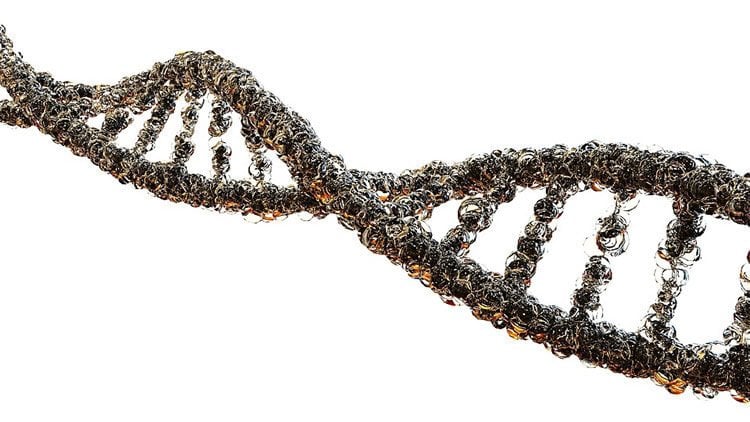Summary: Researchers have identified a specific mechanism involved in how females inherit traits. The findings could help reduce susceptibility to Fragile X and Rett syndrome, the researchers report.
Source: UCR.
As many know, females have two X chromosome while males have one X and one Y chromosome.
Perhaps less known is that female cells randomly and permanently shut off one of the X chromosomes during embryonic development through a process called X chromosome inactivation, or XCI. Just how XCI occurs has remained unclear — until now.
New research performed on mouse female embryonic stem cells by scientists at the University of California, Riverside, traces the origin of XCI to an RNA splicing mechanism.
Occurring in every human cell and almost all human genes, RNA splicing copies and pastes genetic fragments scattered among the genome to create a meaningful or functional genetic message.
In the case of XCI, the researchers found that a special splicing event occurs prior to XCI and in association with the X chromosome chosen for inactivation, but not with the other X chromosome. This special splicing event happens in “Xist,” a gene expressed only in females and the inactive X chromosome.
Scientists have accepted Xist induction at the onset of XCI as the molecular trigger for initiating XCI, but how Xist is induced is not entirely clear. Also unknown is how Xist remains repressed prior to XCI. The new study shows that Xist is largely unspliced, thus unfunctional, before XCI. Upon differentiation of embryonic stem cells, Xist becomes spliced, and thus functional to kick-start subsequent events to induce XCI.
Study results appear in the journal Nucleic Acids Research.
“XCI ensures that females express similar dosages of X chromosome gene products as males do,” said Sika Zheng, an assistant professor of biomedical sciences in the UCR School of Medicine, who led the research. “This inactivation ensures, too, that, like males, females have a balanced expression between the X chromosome and autosomes — chromosomes that are not sex chromosomes.”

Zheng explained that XCI happens in every female, and its regulation influences whether a daughter inherits a trait from her father or her mother. It also determines females’ susceptibility to various diseases, such as Fragile X syndrome and Rett syndrome.
“The splicing mechanism is fundamental to understanding trait inheritance in females,” he said. “If we could manipulate which X chromosome to inactivate through splicing, we might be able to alter females’ expression of their genetic traits and their susceptibility to diseases without altering their genomes. Regulating Xist transcription has been at the center of this research field for a long time. Our discovery should draw scientists’ attention to splicing.”
Funding: The research was funded by the National Institutes of Health. Zheng was joined in the study by Cheryl Stork, first author of the research paper, as well as Zhelin Li and Lin Lin.
Source: Iqbal Pittalwala – UCR
Publisher: Organized by NeuroscienceNews.com.
Image Source: NeuroscienceNews.com image is in the public domain.
Original Research: Open access research for “Developmental Xist induction is mediated by enhanced splicing” by Sarah Schram, Donald Chuang, Greg Schmidt, Hristo Piponov, Cory Helder, James Kerns, Mark Gonzalez, Fei Song, and Jeffrey A. Loeb in Nucleic Acids Research. Published February 20 2019.
doi:10.1093/nar/gky1198
[cbtabs][cbtab title=”MLA”]UCR”Genetic Mechanism Involved in How Females Inherit Traits Identified.” NeuroscienceNews. NeuroscienceNews, 20 February 2019.
<https://neurosciencenews.com/genetics-female-traits-10783/>.[/cbtab][cbtab title=”APA”]UCR(2019, February 20). Genetic Mechanism Involved in How Females Inherit Traits Identified. NeuroscienceNews. Retrieved February 20, 2019 from https://neurosciencenews.com/genetics-female-traits-10783/[/cbtab][cbtab title=”Chicago”]UCR”Genetic Mechanism Involved in How Females Inherit Traits Identified.” https://neurosciencenews.com/genetics-female-traits-10783/ (accessed February 20, 2019).[/cbtab][/cbtabs]
Abstract
Developmental Xist induction is mediated by enhanced splicing
X-inactive-specific transcript (Xist) is a long noncoding RNA (lncRNA) essential for inactivating one of the two X chromosomes in mammalian females. Random X chromosome inactivation is mediated by Xist RNA expressed from the inactive X chromosome. We found that Xist RNA is unspliced in naïve embryonic stem (ES) cells. Upon differentiation, Xist splicing becomes efficient across all exons independent of transcription, suggesting interdependent or coordinated removal of Xist introns. In female cells with mutated polypyrimidine tract binding protein 1 (Ptbp1), differentiation fails to substantially upregulate mature Xist RNA because of a defect in Xist splicing. We further found both Xist129 and XistCAS RNA are unspliced in Mus musculus 129SvJ/Mus castaneous (CAS) hybrid female ES cells. Upon differentiation, Xist129 exhibits a higher splicing efficiency than XistCAS, likely contributing to preferential inhibition of the X129 chromosome. Single cell analysis shows that the allelic choice of Xist splicing is linked to the inactive X chromosome. We conclude post-transcriptional control of Xist RNA splicing is an essential regulatory step of Xist induction. Our studies shed light on the developmental roles of splicing for nuclear-retained Xist lncRNA and suggest inefficient Xist splicing is an additional fail-safe mechanism to prevent Xist activity in ES cells.






